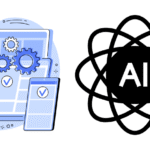
The rise of cross-platform app development has transformed the mobile app development landscape by offering cost efficiency, code reusability, wider market reach, and a consistent user experience across multiple platforms.
This approach allows developers to create powerful applications that run seamlessly on various operating systems like iOS and Android using a single codebase, reducing development time and costs significantly.
Key factors contributing to this trend include advances in cross-platform frameworks like React Native, Flutter, and Xamarin, increased developer productivity, demand for multi-platform apps, and evolving app store guidelines that encourage cross-platform development.
As businesses and developers increasingly recognize the benefits of cross-platform development, this trend is expected to continue gaining traction in the future, enabling companies to efficiently target multiple platforms, reach a broader audience, and deliver high-quality applications that enhance user experiences across devices.
Why businesses to be present on multiple platforms without breaking the bank
Businesses today need to be present on multiple platforms to reach a wider audience without incurring excessive costs. Cross-platform app development offers a solution by allowing businesses to create a single codebase that operates seamlessly across various platforms like iOS and Android, reducing development costs significantly.
This approach enables companies to tap into both iOS and Android user bases without the need for separate native apps, ensuring a broader market reach efficiently and cost-effectively. By embracing cross-platform development, businesses can efficiently target multiple platforms, reach a larger user base, and deliver high-quality applications that enhance user experiences across devices without breaking the bank.
The Concept of Cross-Platform Development
Cross-platform development refers to the practice of creating software products or services that can operate on multiple platforms or software environments, such as different operating systems like iOS and Android. This approach allows developers to write code once and deploy it across various platforms, saving time, effort, and resources compared to developing separate codebases for each platform.
Unlike native app development, which requires distinct coding for each platform, cross-platform development leverages frameworks and technologies that enable the creation of applications that run seamlessly across different operating systems using a single codebase.
How does Cross-Platform development contrast with native development for individual platforms?

Cross-platform development contrasts with native development for individual platforms in several key aspects. While native development focuses on creating apps specifically tailored to a single operating system like Android or iOS, cross-platform development allows for the creation of apps that can run on multiple platforms using a single codebase.
Native apps are optimized for the specific platform they are built for, offering superior performance, full access to device features, and a more responsive user experience. On the other hand, cross-platform apps may sacrifice some performance and access to platform-specific features in exchange for the ability to reach a broader audience efficiently and cost-effectively.
Native development is ideal for applications that require full utilization of a device’s resources, demand high performance, or heavily rely on platform-specific features and APIs. In contrast, cross-platform development is advantageous when time and cost efficiency are priorities, the app’s complexity is moderate, or rapid prototyping and testing are essential.
While native apps excel in delivering top-notch user experiences and performance, cross-platform apps offer benefits such as reduced development time, cost savings, wider market reach, and code reusability across different platforms. Ultimately, the choice between native and cross-platform development depends on project requirements, budget constraints, desired user experience, and the specific goals of the app being developed.
Why businesses should consider Cross-Platform apps as a viable strategy?
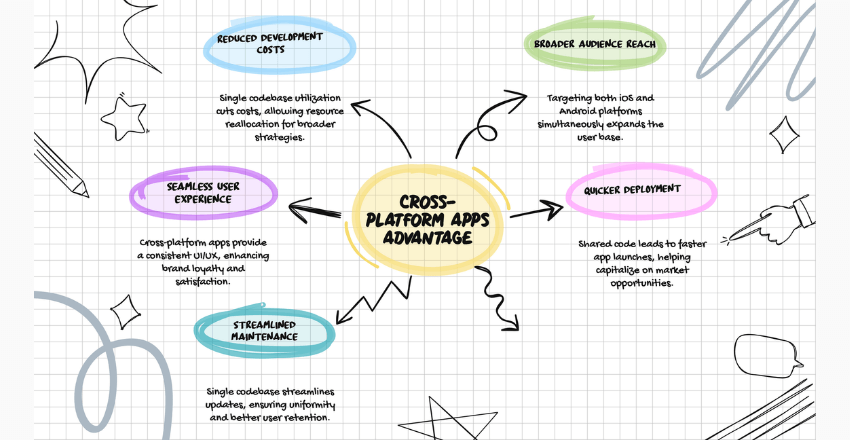
Businesses should consider cross-platform apps as a viable strategy due to the numerous benefits they offer, as highlighted in the provided sources. Here are some final thoughts based on the information:
Cost Efficiency:
Cross-platform app development significantly reduces development costs by utilizing a single codebase for multiple platforms. This cost-saving advantage allows businesses to allocate resources more efficiently and reach a wider audience without incurring substantial expenses.
Wider Market Reach:
By targeting multiple platforms simultaneously, cross-platform apps can reach a broader audience, including both iOS and Android users. This broader market reach is essential for businesses looking to expand their user base and increase their market penetration.
Consistent User Experience:
Cross-platform frameworks provide native-like performance, ensuring a seamless user experience across different platforms. Consistency in design, functionality, and performance enhances user engagement and satisfaction, contributing to brand loyalty and positive user interactions.
Faster Time-to-Market:
Developing cross-platform apps allows for quicker deployment due to the shared codebase and streamlined development process. Businesses can launch their apps faster, enabling them to capitalize on market opportunities swiftly and stay ahead of the competition.
Efficient Maintenance and Updates:
Maintaining cross-platform apps is more straightforward as changes and updates only need to be implemented once in a single codebase. This efficiency in maintenance ensures that users receive consistent service and features across all platforms, leading to improved user retention and engagement.
Businesses should consider cross-platform apps as a viable strategy because of their cost efficiency, wider market reach, consistent user experience, faster time-to-market, and efficient maintenance processes.
Embracing cross-platform development can help businesses optimize resources, enhance user engagement, and stay competitive in the dynamic mobile app market.
Cost Benefits: Comparison of cost implications between cross-platform and native app development

When comparing the cost implications between cross-platform and native app development, several key factors come into play based on the provided sources:
Resource Management and Abstraction Layers:
Cross-platform development involves additional layers of abstraction and bridges between native APIs, which can impact resource management and potentially increase costs due to the complexity introduced by these layers.
Initial Development Costs:
Native app development typically requires crafting separate applications for iOS and Android, leading to higher initial costs compared to cross-platform development, where a single codebase can be used for multiple platforms, resulting in cost savings.
Development Team Requirements:
Cross-platform development often requires only one team of developers who are proficient in the chosen framework, reducing labor costs compared to native development that may necessitate separate teams for each platform.
Time Savings:
Cross-platform development offers significant time savings due to the ability to reuse code across platforms, leading to faster development cycles and reduced time-to-market compared to native development, which involves building separate apps for each platform.
Maintenance Costs
Native app maintenance costs can be higher as updates need to be implemented separately for each platform, while cross-platform apps benefit from shared codebases that simplify maintenance tasks and reduce overall costs over time.
While native app development may involve higher initial costs due to platform-specific development requirements, cross-platform development offers cost advantages through shared codebases, reduced labor needs, faster development cycles, and lower maintenance costs over the app’s lifecycle.
Businesses looking to optimize resources and reach a broader audience efficiently often find cross-platform development more cost-effective in the long run compared to native app development.
Development costs
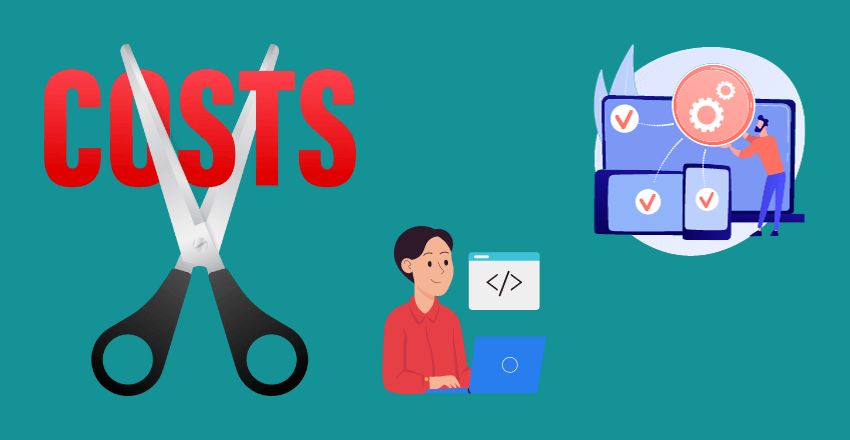
The cost of cross-platform app development can vary depending on the complexity and features of the app.
Here’s a summary table for the estimated costs of cross-platform app development based on the complexity and features of the app:
| App Complexity | Features | Estimated Cost Range |
|---|---|---|
| Simple Apps | Basic UI, login, user profile, in-app purchases, search | $15,000 – $30,000+ |
| Moderate Apps | Includes features of simple apps plus social login, geo-tracking | $25,000 – $45,000+ |
| Advanced Apps | Complex features requiring professional development | $40,000 – $100,000+ |
The table illustrates that the cost of cross-platform app development varies from $15,000 to $100,000 or more, depending on the type, size, design, features, functionalities, and specific needs of the app. This range allows businesses to select a level of app complexity that matches their budget and requirements while still enjoying the cost benefits over native app development approaches.
Simple Apps (With Basic Features):
Basic apps, often minimum viable products (MVPs), with standard UI and basic features like login, user profile, in-app purchases, and search typically range from $15,000 to $30,000 or more, depending on specific requirements.
Moderate Apps (With Average Features):
Apps with additional features like social login, geo-tracking, and more fall in the middle range in terms of features and functionalities. The cost for these apps typically ranges from $25,000 to $45,000 or more.
Advanced Apps (With Complex Features):
Advanced apps with complex features that require professional development and cannot be made via a do-it-yourself approach cost between $40,000 to $100,000 or more.
Overall, the cost of cross-platform app development can range from $20,000 to $100,000 or more depending on the type, size, design, features, functionalities, and other specific needs of the app. Businesses can choose the level of complexity that aligns with their budget and requirements while benefiting from cost savings compared to native app development approaches.
Maintenance and update costs

Maintenance and update costs for mobile apps encompass various factors that contribute to the overall expenses of keeping an app operational and up-to-date. Here is a breakdown of the key components that influence maintenance and update costs based on the provided sources:
Hosting Fees:
Hosting fees are a recurring cost associated with maintaining an app, ranging from $70 to $320 per month depending on the size and complexity of the app. Simple apps may require basic shared hosting, while more complex apps with features like user login or eCommerce components may need dedicated or VPS hosting, leading to higher hosting costs.
Updates and New Features:
Updating an app involves adding new features or enhancing existing ones, with costs varying based on the scope of the project and developer rates. The average hourly rate for a mobile app developer in the United States ranges from $41 to $54, impacting the cost of incorporating updates and new features into the app.
Support:
Providing customer support post-launch is essential for maintaining user satisfaction. The cost of customer support depends on factors like the number of customer service representatives needed and their hourly rates, typically ranging from $15 to $19 per hour. The total support costs are influenced by the project’s scope and requirements.
App Store Fees:
Listing an app in platforms like the Apple App Store or Google Play Store incurs fixed fees, adding to the maintenance costs. These fees are essential for app visibility and distribution but contribute to the overall expenses of maintaining an app.
Maintenance and update costs for mobile apps involve hosting fees, expenses related to incorporating new features and updates, customer support costs, and fees associated with listing apps on app stores.
These ongoing expenses are crucial for ensuring app functionality, user satisfaction, and competitiveness in the ever-evolving mobile app landscape.
Examples of savings from choosing cross-platform
Examples demonstrate significant cost savings from choosing cross-platform app development over native development. Companies like Uber and Spotify have successfully leveraged cross-platform development to save time and resources while reaching a broader audience efficiently.
Uber:

Uber’s native apps for iOS and Android are fundamental to its ride-hailing service, offering real-time tracking, secure payments, and quick driver matching through native optimization. By utilizing cross-platform development, Uber streamlined its app development process, reducing costs associated with building and maintaining separate native apps for each platform.
Spotify:
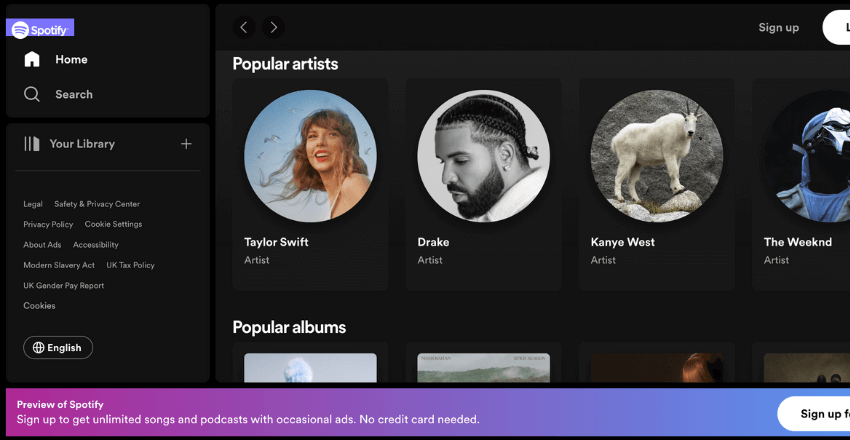
Spotify’s native apps provide users with an exceptional music streaming experience, featuring offline downloads, seamless playback, and an intuitive user interface optimized for both iOS and Android platforms. Through cross-platform development, Spotify achieved cost savings by sharing code across platforms, enabling faster development cycles and broader market reach.
These examples highlight how companies like Uber and Spotify have benefited from the cost-efficiency of cross-platform app development by reducing development costs, accelerating time-to-market, and ensuring a consistent user experience across multiple platforms.
Time Efficiency: Analysis of how cross-platform development saves time
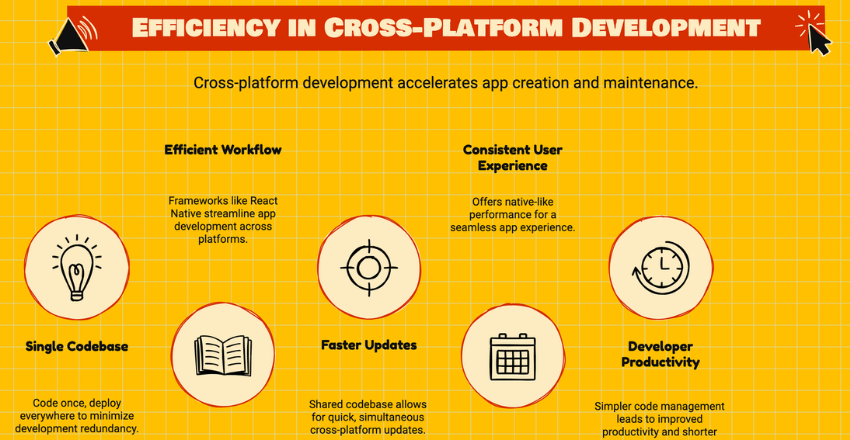
Cross-platform development saves time through various mechanisms that streamline the app development process, as highlighted in the provided sources:
Single Codebase:
Cross-platform development allows developers to write code once and deploy it across multiple platforms, eliminating the need to create separate codebases for each platform. This significantly reduces development time by enabling developers to work more efficiently and avoid duplicating efforts.
Efficient Workflow:
By utilizing cross-platform frameworks like React Native, Flutter, and Xamarin, developers can leverage a more streamlined and efficient workflow. These frameworks provide tools and features that facilitate code reusability, making it easier to develop apps for different platforms simultaneously without starting from scratch for each platform.
Faster Updates and Maintenance:
Updating and maintaining cross-platform apps is more straightforward and less time-consuming compared to native apps. Changes and bug fixes only need to be made once in the single shared codebase, allowing developers to release updates simultaneously across all platforms. This ensures a consistent user experience and saves time on maintenance tasks.
Consistent User Experience:
Cross-platform frameworks offer native-like performance, resulting in a seamless user experience across different platforms. Users can enjoy the same level of responsiveness and performance as they would with native apps, enhancing user satisfaction and engagement.
Increased Developer Productivity:
Working with a single codebase in cross-platform development reduces the complexity of managing multiple platforms, leading to improved developer productivity. This streamlined approach accelerates the development process, shortens time-to-market, and enhances overall efficiency in app creation.
Cross-platform development saves time by enabling developers to work more efficiently with a single codebase, streamlining workflows, facilitating faster updates and maintenance, ensuring consistent user experiences, and boosting developer productivity through optimized processes.
How does Cross-Platform apps enhance market penetration?
Cross-platform apps enhance market penetration by enabling businesses to reach a broader audience across multiple devices and operating systems. Here are the key points from the provided sources that discuss how cross-platform apps facilitate market penetration:
Wider Audience Reach:
Cross-platform apps are compatible with various devices and operating systems, allowing businesses to target a larger user base. This inclusivity ensures that the app can be accessed by users regardless of their device preferences, leading to increased market penetration.
Cost Efficiency:
Developing cross-platform apps with a single codebase reduces development costs significantly compared to creating separate native apps for each platform. This cost efficiency enables businesses, especially startups and small enterprises with limited resources, to expand their market reach without incurring substantial expenses, thereby enhancing market penetration.
Consistent User Experience:
Cross-platform frameworks provide native-like performance, ensuring a seamless user experience across different platforms. Users can enjoy consistent functionality and design elements, regardless of the device they are using. This consistency contributes to positive user experiences, driving higher adoption rates and increasing market penetration.
Faster Updates and Maintenance:
Maintaining cross-platform apps is more straightforward as changes and bug fixes only need to be implemented in a single codebase. This streamlined process allows for quicker updates across all platforms simultaneously, ensuring that users receive consistent service and features. The ability to deploy updates efficiently enhances user satisfaction and boosts market penetration.
Cross-platform apps enhance market penetration by offering a wider audience reach, cost efficiency, consistent user experiences, and faster updates and maintenance processes. These factors collectively contribute to expanding the app’s presence in the market and increasing user engagement across diverse platforms.
Evidence showing improved user engagement due to consistency across platforms. The evidence from the provided sources demonstrates that improved user engagement is achieved through consistency across platforms in cross-platform app development.
Challenges and Considerations

Address common concerns: performance issues, UI/UX compromises, etc. Addressing common concerns in cross-platform app development, such as performance issues and UI/UX compromises, is crucial for ensuring the success of mobile applications.
Here are insights from the provided sources on how these challenges are typically managed:
Performance Issues:
Memory Consumption: Cross-platform apps may consume more memory than native apps, potentially impacting performance. This challenge arises from the additional abstraction layer used by frameworks to ensure compatibility across platforms. To mitigate this, developers need to optimize memory usage and address potential slowdowns caused by increased memory consumption.
Performance Bottlenecks: Identifying and optimizing performance bottlenecks is essential in cross-platform development. Areas like slow network communication, inefficient algorithms, memory leaks, excessive CPU usage, and suboptimal rendering can significantly impact app performance.
By profiling the application and addressing these bottlenecks, developers can ensure smooth performance across all platforms.
UI/UX Compromises:
Fragmented User Interface Design: Cross-platform frameworks may limit flexibility in designing platform-specific UI elements, leading to a fragmented user interface design. Maintaining consistency across platforms while adhering to each platform’s guidelines can be challenging. Developers often face compromises in UI design due to differences in available UI elements or behaviors on various platforms.
Performance and Native Integration: Achieving optimal performance and seamless integration with native features can be challenging in cross-platform development. Frameworks rely on abstractions and plugins to interact with platform-specific APIs, which may introduce overhead and affect performance. Balancing efficiency with robust performance remains a key challenge that developers need to address.
Managing performance issues through memory optimization, addressing performance bottlenecks, optimizing code efficiency, and balancing UI/UX compromises by maintaining consistency while adapting to platform-specific guidelines are key strategies in overcoming common concerns in cross-platform app development.
External Sources
https://www.techopedia.com/definition/30026/cross-platform-development
https://www.techtarget.com/searchmobilecomputing/definition/cross-platform-mobile-development
FAQs

What is the average cost of app maintenance?
The average cost of app maintenance in 2024 is approximately 20.7% of the initial development cost. This cost includes various aspects such as bug fixes, updates, analytics monitoring, third-party licenses and subscriptions, and other recurring expenses related to maintaining and supporting a mobile app.
Additionally, factors like app complexity, development approach (native or cross-platform), design requirements, and hiring model can impact the maintenance costs of an app. For example, the cost of maintaining a simple app is around $8,000, a medium complexity app costs about $12,000, and a complex application can reach up to $60,000.
When comparing native app development costs (around $10k minimum for Android and $11k minimum for iPhone) with cross-platform development costs (around $8k minimum), it’s evident that cross-platform development can be a more cost-effective option for maintaining apps.
Why native app development is often costly than cross-platform or hybrid app development?
Native app development is often more costly than cross-platform or hybrid app development due to the inherent differences in their development approaches. In native app development, separate codebases are required for each platform (iOS and Android), leading to higher costs associated with maintaining and updating multiple codebases.
On the other hand, cross-platform and hybrid apps utilize a single codebase that can be deployed across multiple platforms, reducing development costs significantly.
This difference in codebase management results in native app development being more expensive due to the need for platform-specific development efforts and resources, making cross-platform and hybrid app development more cost-effective alternatives for businesses with budget constraints.
How much does a cross-platform app cost?
The cost of developing a cross-platform app can vary based on factors such as complexity, features, functionality, design, platform, developer experience, location, and duration. On average, the cost of cross-platform app development ranges from $20,000 to $65,000.
However, the final cost will depend on the specific requirements of each project. Additionally, the cost can be lower if a vendor offshore is hired for the development process.
How much do hybrid apps cost?
Based on the information provided in the sources, the cost of developing hybrid apps can vary depending on factors such as complexity, features, and developer location.
Here is a breakdown of the estimated costs for hybrid app development:
Stackademic:
Developing a hybrid app in 2024 can range from $30,000 to $150,000 or more, depending on specific requirements.
DesignRush:
Medium-complex hybrid mobile apps can cost between $10,000 and $50,000, with enterprise hybrid apps with advanced features ranging from $50,000 to $150,000. Games, being the most complex apps, may cost up to $250,000.
Toobler Technologies:
Hybrid mobile applications might cost around $120,000 or more for companies requiring small or medium applications.
Nimble AppGenie:
Hybrid app development costs around $20,000 to $60,000 or more depending on factors like complexity, features, and developer location.
Overall, the cost of developing hybrid apps can range from $10,000 to over $250,000 based on the complexity of the app, features required, and the specific needs of the project as outlined in the provided sources.
What are the benefits of cross-platform app development for businesses?
Cross-platform app development offers several benefits for businesses, as outlined in the provided sources. Here are the key advantages of cross-platform app development:
Cost Efficiency:
Cross-platform app development reduces costs significantly by utilizing a single codebase for multiple platforms, eliminating the need for separate development efforts for each platform. This cost-saving advantage allows businesses to allocate resources more efficiently and invest in other critical areas.
Quicker Turnaround:
Developing a single app that functions across various platforms saves time and reduces development cycles. This quicker turnaround time is beneficial for businesses looking to deploy their apps faster and gain a competitive edge in the market.
Wider Market Reach:
Cross-platform apps enable businesses to reach a broader audience by targeting multiple platforms simultaneously, including Android, iOS, and web platforms. This broader market reach increases visibility, user base, and potential revenue generation for businesses.
Consistent User Experience:
Cross-platform frameworks provide native-like performance, ensuring a seamless user experience across different platforms. Consistency in design, functionality, and performance enhances user engagement, trust, and brand loyalty.
Code Reusability:
The ability to reuse code across different platforms simplifies the development process, saves time, effort, and resources. By using a single codebase, developers can deploy the app on multiple platforms efficiently.
Simple Cloud Integration:
Cross-platform apps can be easily integrated with cloud services for hosting, making them more functional and scalable. This integration enhances the app’s capabilities and allows for easy coordination with various extensions and plug-ins.
Brand Consistency:
Maintaining a consistent brand image and user experience across different platforms is crucial in today’s digital landscape. Cross-platform development ensures that an app’s design, features, and functionalities remain consistent, reinforcing brand identity and providing users with a familiar experience.
These benefits collectively make cross-platform app development an attractive strategy for businesses aiming to maximize their reach, reduce costs, maintain consistency across platforms, and enhance user engagement and satisfaction.
How does cross-platform app development compare to native app development in terms of performance?
Cross-platform app development is often compared to native app development in terms of performance.
Cross-Platform App Development:
Performance: Cross-platform apps are often criticized for lower performance and speed compared to native apps. This is due to the additional abstraction layer and rendering process involved in cross-platform development, which can reduce speed and overall performance.
Functionality Constraints: Cross-platform apps may face challenges in adapting functionality and design for specific devices, platforms, and operating systems. This can lead to difficulties in feature implementation and result in constrained functionality, impacting user experience.
Delayed Updates: Cross-platform apps may experience delays in supporting new OS updates or features released by Apple or Google. These apps often require separate updates to access the latest features, which can result in delayed updates compared to native apps.
Native App Development:
Performance: Native apps are known for their high performance as they are optimized for specific platforms using platform-specific programming languages. This optimization allows native apps to be faster and more efficient compared to cross-platform apps.
User Experience: Native apps offer a seamless and intuitive user experience by adhering to platform guidelines and UI/UX conventions. They can leverage specific hardware features like GPS, camera, and push notifications, enhancing user experience.
Access to Platform-Specific Features: Native app development provides access to a wide range of platform-specific features and APIs, allowing integration with the latest advancements seamlessly. This access enables functionalities like augmented reality and biometric authentication.
While cross-platform development offers advantages such as cost-effectiveness and wider market reach, it may lag behind native development in terms of performance, functionality constraints, and delayed updates.
On the other hand, native app development excels in performance, user experience, and access to platform-specific features, making it a preferred choice for applications requiring high performance and specific hardware integrations.
What are some challenges of cross-platform app development?
Some challenges of cross-platform app development include:
Performance Concerns:
Cross-platform apps may face issues with slow code performance, leading to unresponsive UIs, slow-loading screens, and crashes. The additional abstraction layer in cross-platform development can impact speed and overall performance.
User Experience Consistency:
Ensuring consistent user experiences across different devices and operating systems can be challenging in cross-platform development. Design and UI/UX challenges may arise due to differences in platform guidelines and principles, affecting the overall user experience.
Compatibility Challenges:
Dealing with compatibility issues related to device fragmentation, varying screen sizes, hardware capabilities, and resolutions poses a significant challenge for developers. Cross-platform frameworks offer responsive design tools to address these challenges and ensure consistent user experiences.
Limited Access to Native Device Functions:
Cross-platform development frameworks may not fully support critical device properties like internal storage access and hardware configuration capabilities. This limitation restricts customization choices and hinders certain digital product operations, impacting the app’s functionality.
Integration Problems:
Cross-platform software integration can be time-consuming for developers, leading to challenges in integrating various components seamlessly. Additionally, the need to use third-party cloud providers for storage concerns can add complexity to the development process.
Loss of Code:
There is a risk of code loss in cross-platform app development as some frameworks lock developers’ code into a project, limiting access outside of that platform. This can hinder flexibility and future modifications to the codebase.
These challenges highlight the complexities involved in cross-platform app development, emphasizing the importance of addressing performance issues, ensuring consistent user experiences, overcoming compatibility challenges, and navigating limitations in accessing native device functions for successful app deployment.
What are some popular cross-platform app development tools?
Some popular cross-platform app development tools include:
Xamarin:

Xamarin is an open-source framework that allows developers to build hybrid mobile applications using the C# language and .NET frameworks. It supports Windows, iOS, and Android platforms seamlessly, offering access to a wide range of libraries and development tools.
React Native:
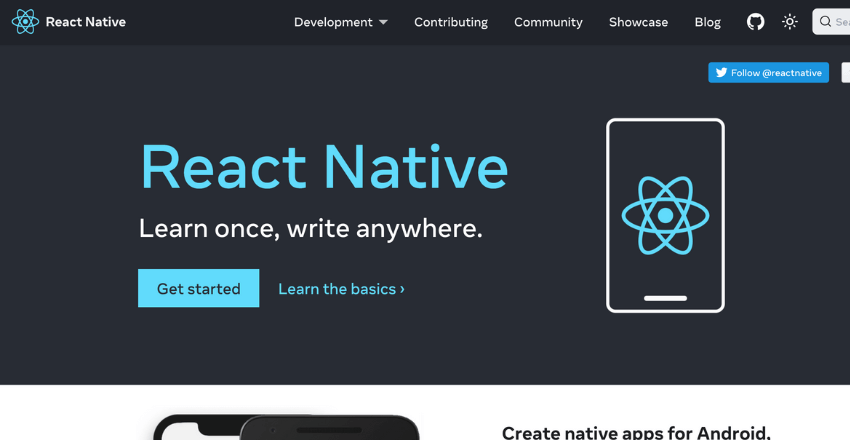
React Native is a widely used open-source framework that enables developers to create mobile applications for iOS, Android, and web platforms using JavaScript. It simplifies complex tasks with uncomplicated codes and allows for code sharing between Android and iOS, resulting in faster development.
Flutter:
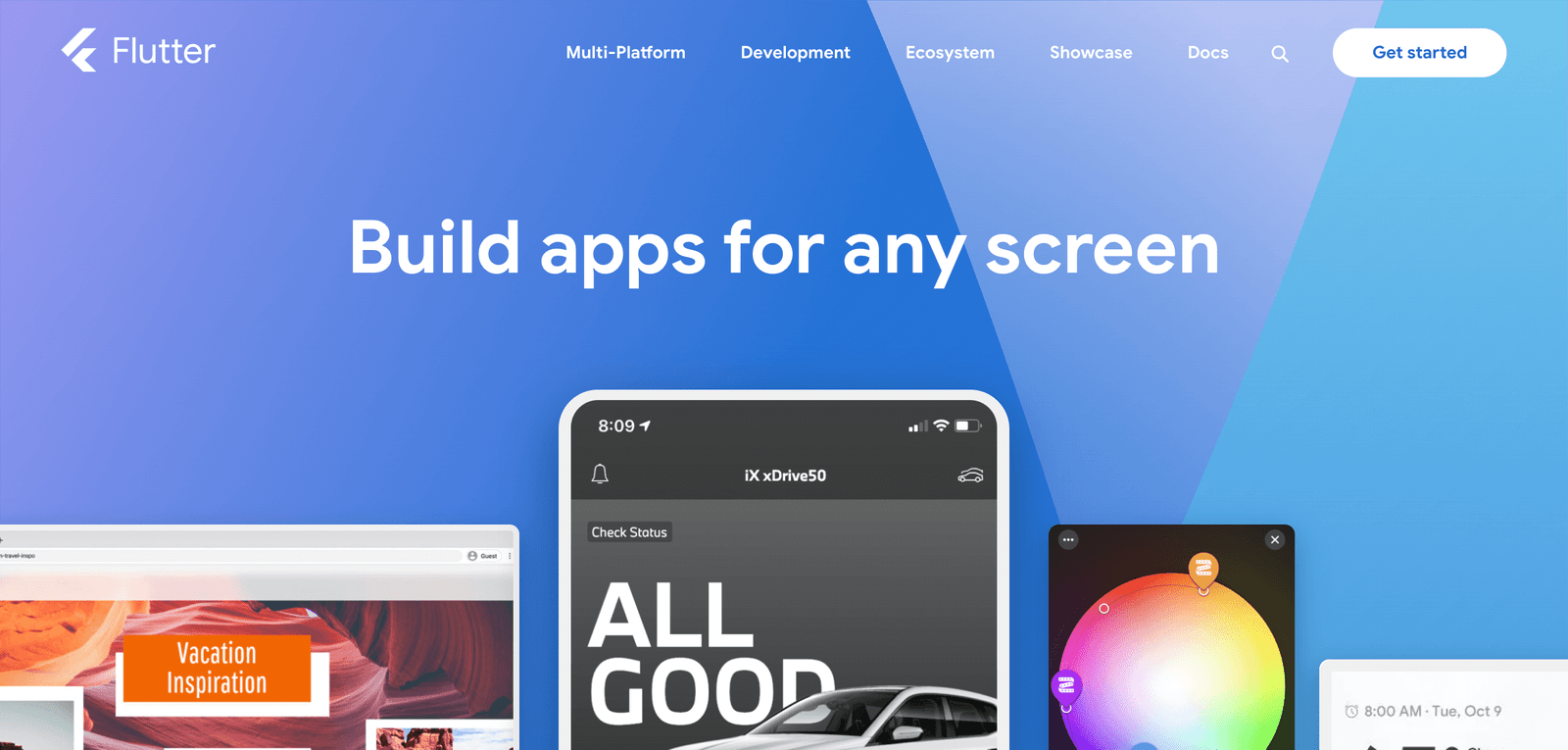
Flutter is an open-source development kit that uses Dart for building high-quality apps for various platforms like web-based applications, iOS, and Android. It allows developers to create beautiful and fast applications with a single codebase, making it a popular choice among developers.
Ionic:

Ionic is a free application development framework that uses HTML, CSS, and JavaScript to build cross-platform apps with a large collection of pre-made UI components. It enables developers to create powerful apps with customization options while working well with AngularJS.
These tools provide developers with the flexibility to create cross-platform applications efficiently while leveraging their unique features and capabilities tailored to different development needs and preferences.
What are some examples of successful cross-platform apps?
Some examples of successful cross-platform apps include:
Alibaba:
Alibaba, a prominent e-commerce platform, is based on the Flutter framework, showcasing the effectiveness of cross-platform development in creating robust and scalable applications.
Google Ads:
Google Ads, a widely used advertising platform, is based on Flutter, highlighting the versatility and efficiency of cross-platform app development in delivering high-quality applications.
Facebook/Instagram:
Facebook and Instagram, popular social media platforms, are based on React Native, demonstrating the success of cross-platform development in creating engaging and user-friendly applications that cater to a broad audience.



